Luden Loquen SPACE (카페LN)
1.1Km 2019-11-26
5, Bukchon-ro 5na-gil, Jongno-gu, Seoul
+82-2-722-7597
Luden Loquen SPACE is a unique hanok cafe, located at the end of the alley where Bukchon Hanok Village starts. The cafe is not just an average café where you can drink tea or coffee but because of location and design it has an added sense of cultural value. Locals come to enjoy the best tea in town, brewed using high quality tea leaves with information on its origin attached. In addition to traditional drinks and sweets, the coffee shop offers a variety treats that combines Korean ingredients and modern desserts. The hanok building has been reinterpreted through a modern design.
Eyedaq Optician (아이닥안경)
1.1Km 2020-04-24
6, Myeongdong 3-gil, Jung-gu, Seoul
+82-2-754-0110
Associated with Eye Matrix of Japan, Eyedaq offers every kind of eyeglasses: from high myopic lenses to progressive lenses and sports glasses. Its main customers include those in need of special eyeglasses: police officers, firefighters, professional sports players (such as football and baseball players), and skin and scuba divers. As a service to its Japanese clientele, the shop provides overseas shipping options to Japan. Customized eyeglasses can be ordered online. In addition, Eyedaq boasts an array of famous imported brands such as Hoya, Seiko, Pentax, and Zeiss.
Wondang Gamjatang Myeongdong (원당감자탕 명동)
1.1Km 2024-03-11
1F, 35, Myeongdong 8na-gil, Jung-gu, Seoul
+82-2-776-7612
Located in Myeongdong, a central and tourist area of Seoul, Wondang Gamjatang offers gamja tang (pork backbone stew) as their signature dish. Patrons have the option to other delectable menu such as bulgogi, jokbal bossam (kimchi cabbage wraps with braised pigs' feet). It's popular with both Koreans and foreigners. As it's open 24 hours a day, seven days a week, one can visit anytime.
Neungnabapsang (능라밥상)
1.1Km 2021-03-22
42, Donhwamun-ro, 5-gil, Jongno-gu, Seoul
+82-2-733-9905
A place where you can taste North Korean traditional dishes run by a chef who was a North Korean defector. This restaurant's signature menu is boiled meat platter. This North Korean cuisine restaurant is located in Jongno-gu, Seoul.
Jeonju Hoegwan (전주회관)
1.1Km 2019-08-31
32-1, Sejong-daero 14-gil, Jung-gu, Seoul
82-2-778-6689
Well-known among both Koreans and foreigners, this restaurant has been specializing in traditional Korean dishes for more than 50 years. Its gopdol bibimbap is patented and also the most popular dish in the restaurant.
Korea Beauty Festival (코리아뷰티페스티벌)
1.1Km 2024-05-23
35 Myeongdong-gil, Jung-gu, Seoul
+82-2-6000-4356
The Korea Beauty Festival is a full-on K-beauty festival geared towards international visitors, with participation of many tourism and beauty organizations. Visitors can enjoy K-beauty experiences and discounts ranging from hair and make-up to fashion and even medical and wellbeing themes.
Bukchon Cultural Center (북촌문화센터)
1.1Km 2025-06-19
37 Gyedong-gil, Jongno-gu, Seoul
Bukchon Cultural Center, located in a hanok, was established to offer traditional cultural experience opportunities for visitors to the area. The programs include tea ceremony, handicraft, and gugak as well as a Public Relations Exhibition Hall introducing Bukchon culture and hanok. Also, the center houses a space and a pavilion for visitors to relax while traveling.
Eight Scenic Views of Bukchon (북촌 8경)
1.1Km 2024-03-18
37, Gyedong-gil, Jongno-gu, Seoul
+82-2-2148-4161
The Eight Scenic Views of Bukchon can be found at the Bukchon Hanok Village between Gyeongbokgung Palace and Changdeokgung Palace. Bukchon was historically a district where the aristocracy of Joseon had resided in, so it is still home to a large number of traditional dwellings, called hanok in Korean. The eight views are as follows: No. 1, view of Chengdeokgung Palace; No. 2, view of Wonseo-dong Handicraft Road; No. 3, view of the Gahoe-dong area; No. 4, view from the hill at Gahoe-dong (Bukchon Observatory); No. 5, the view of the road uphill at Gahoe-dong; No. 6, the view of the road downhill at Gahoe-dong; No. 7, the view at house number (beonji) 31, Gahoe-dong; No. 8, the view of the stone stairway at Samcheong-dong.
Baek In-je House (백인제가옥)
1.1Km 2024-10-15
16 Bukchon-ro 7-gil, Jongno-gu, Seoul
+82-2-724-0200
Baek In-je House, located in Bukchon Hanok Village, is a hanok built during the Japanese administration period that portrays modern hanok features. The structure consists of a main room offering a good view of the whole village, spacious bedrooms, a large garden, and annex buildings. As it maintains the beauty of a traditional hanok while incorporating the modern trend of its time, Baek In-je House is considered to be highly valuable in means of both architecture and history, representing the Bukchon Hanok Village together with Yun Bo-seon House.
Baek In-je House was built from black pine, which was first introduced in Seoul during the Gyeongseong Expo in 1907, distinguishing itself from other upper-class houses of its time. Unlike other traditional hanok designs that separate the main building from the other rooms, Baek In-je House connects the two with a hallway, allowing convenient access between the two structures. The house also consists of a Japanese-style hallway and floor mat rooms, reflecting the interior trends of that period. Baek In-je House is also unique in that the main room is partially built as a two-story structure, a style that was never seen in any traditional hanok built during the Joseon period.
Moonguesthouse(문게스트하우스)
1.1Km 2024-06-20
31-18, Samil-daero 32-gil, Jongno-gu, Seoul
+82-2-745-8008, +82-10-8704-9981
The Moon Guesthouse is situated near a number of interesting tourist destinations including Unhyeongung Palace (3min on foot), Bukchon Hanok Village (5min on foot), Changdeokgung Palace (5min on foot), and Changgyeonggung Palace (10min on foot). The guesthouse was named ‘moon’ (‘door’ in English) because it has many 176 doors and windows. Upon entering by the gate, visitors will see a ‘ㄷ’-shaped hanok building in the courtyard, in which a wooden bedstead and a table are placed. On the opposite of the hanok building there is a wall roofed with tiles engraved with Korean patterns such as deer, pine, turtle, etc. Flowers in the flowerbed lined up along the wall are in bloom and the bonsai are also well-kept in the house. Renovated and opened as a guesthouse in September 2011, Moon Guesthouse consists of a bonchae (main building) and a byeolchae (detached house). The rooms are decorated with red clay and hanji (traditional Korean paper handmade from mulberry trees), and have under-the-floor heating (ondol). Each room is equipped with an air-conditioner, and has a 40cm-thick layer of red clay over the ceiling for insulation, making the rooms cool in summer and warm in winter. The house has seven individual guestrooms and five modern bathrooms, but the entire building (bonchae or byeolchae) can be rented, too. In particular, the unhyeondang of the bonchae is very popular as it can be converted into one large space for special events, group workshops, etc. simply by opening all the sliding doors (Bunhapmun – Goryeo construction style). This room, which is decorated with a flower-patterned windscreen, a landscape painting, and calligraphy, has been used as a shooting location for various TV programs including KBS2’s TV reality program Man’s Qualification and its variety show The Human Condition. The guestrooms are also equipped with traditional furniture including a cabinet inlaid with mother-of-pearl. The guesthouse also provides a variety of experience programs from 11am to 3pm, including tea ceremony, wearing Hanbok (traditional Korean clothes), making kimchi and gochujang (red chili paste), playing a traditional musical instrument, making a rubbing of a stone inscription, calligraphy, drawing orchids on a fan, and so on. The house has about seventy hanbok and other clothing accessories, as well as a royal costume. Its calligraphy and drawing orchid programs are run directly by the owner, who used to work as a classical Chinese teacher at a high school.
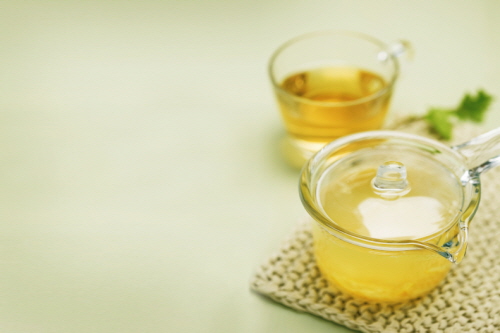
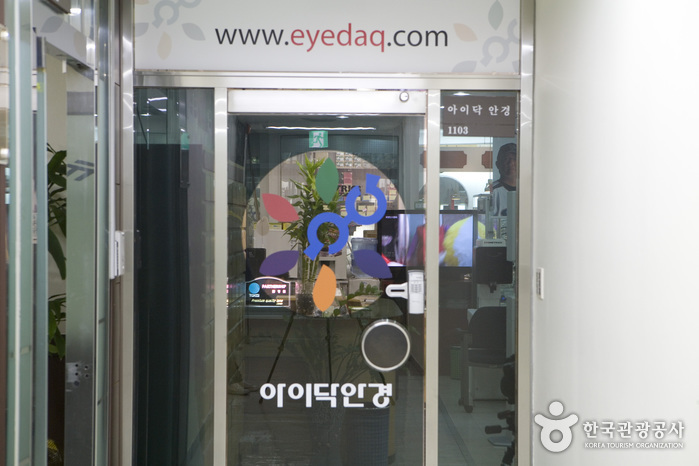
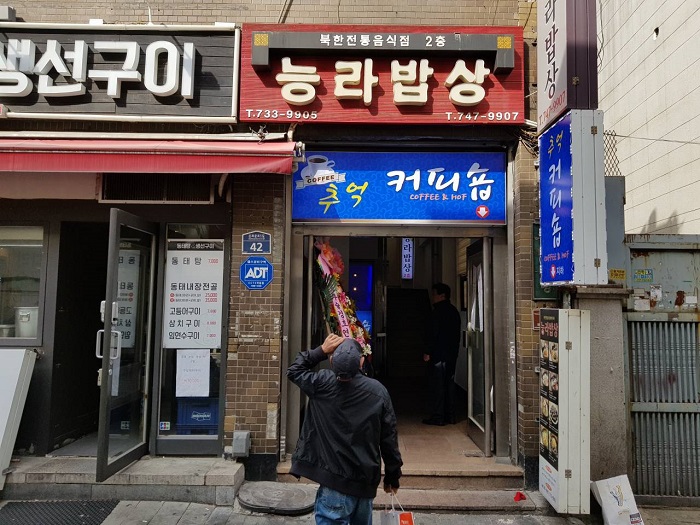
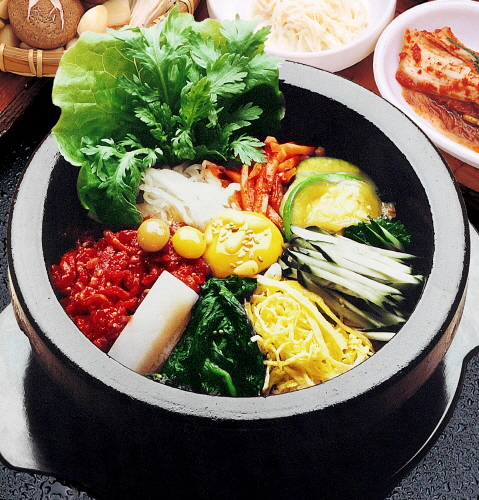

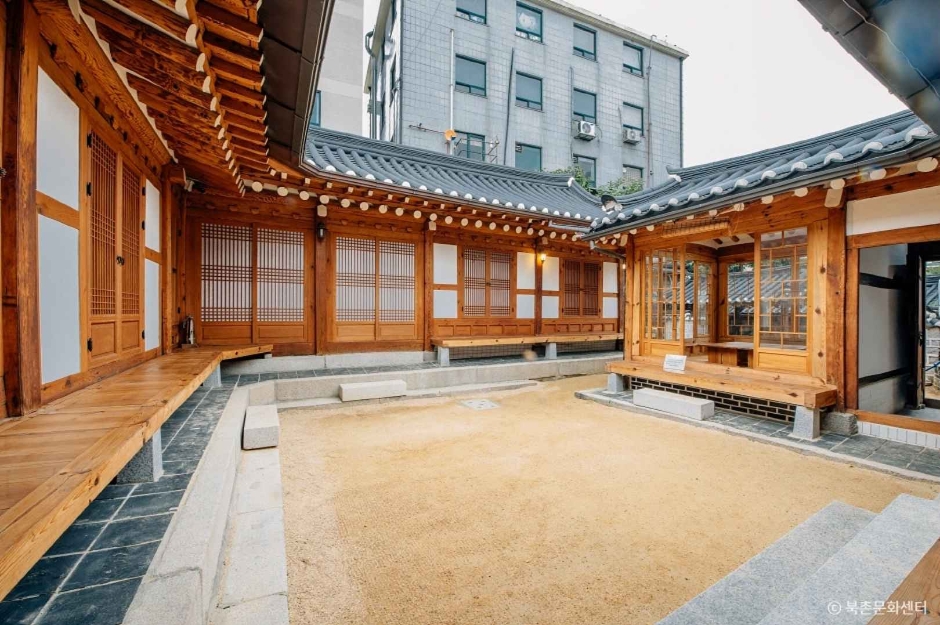

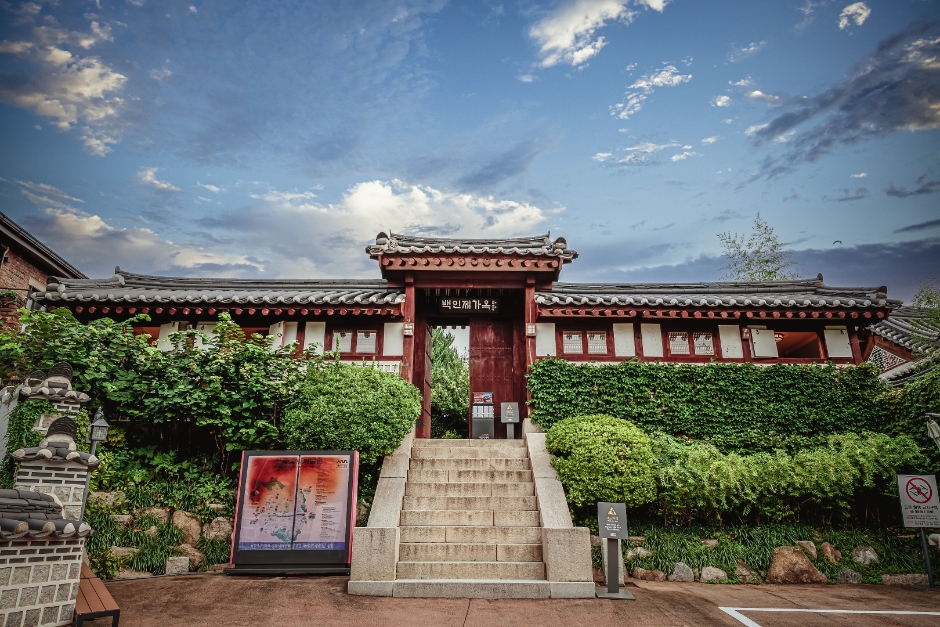
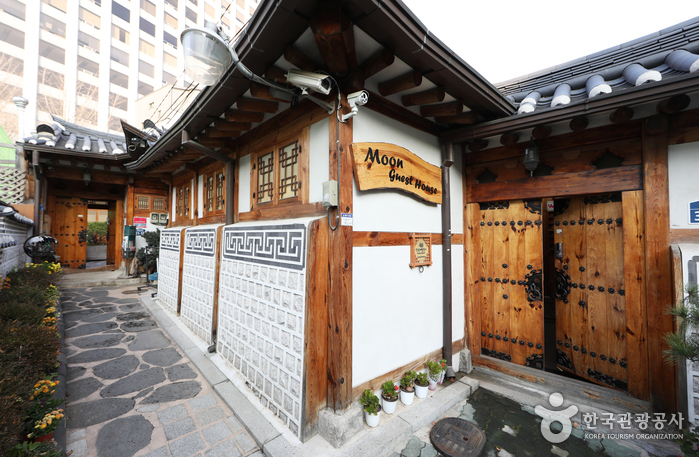
 English
English
 한국어
한국어 日本語
日本語 中文(简体)
中文(简体) Deutsch
Deutsch Français
Français Español
Español Русский
Русский